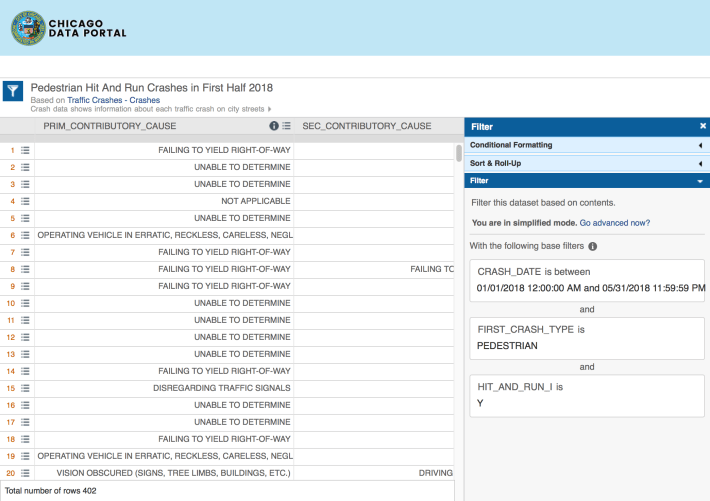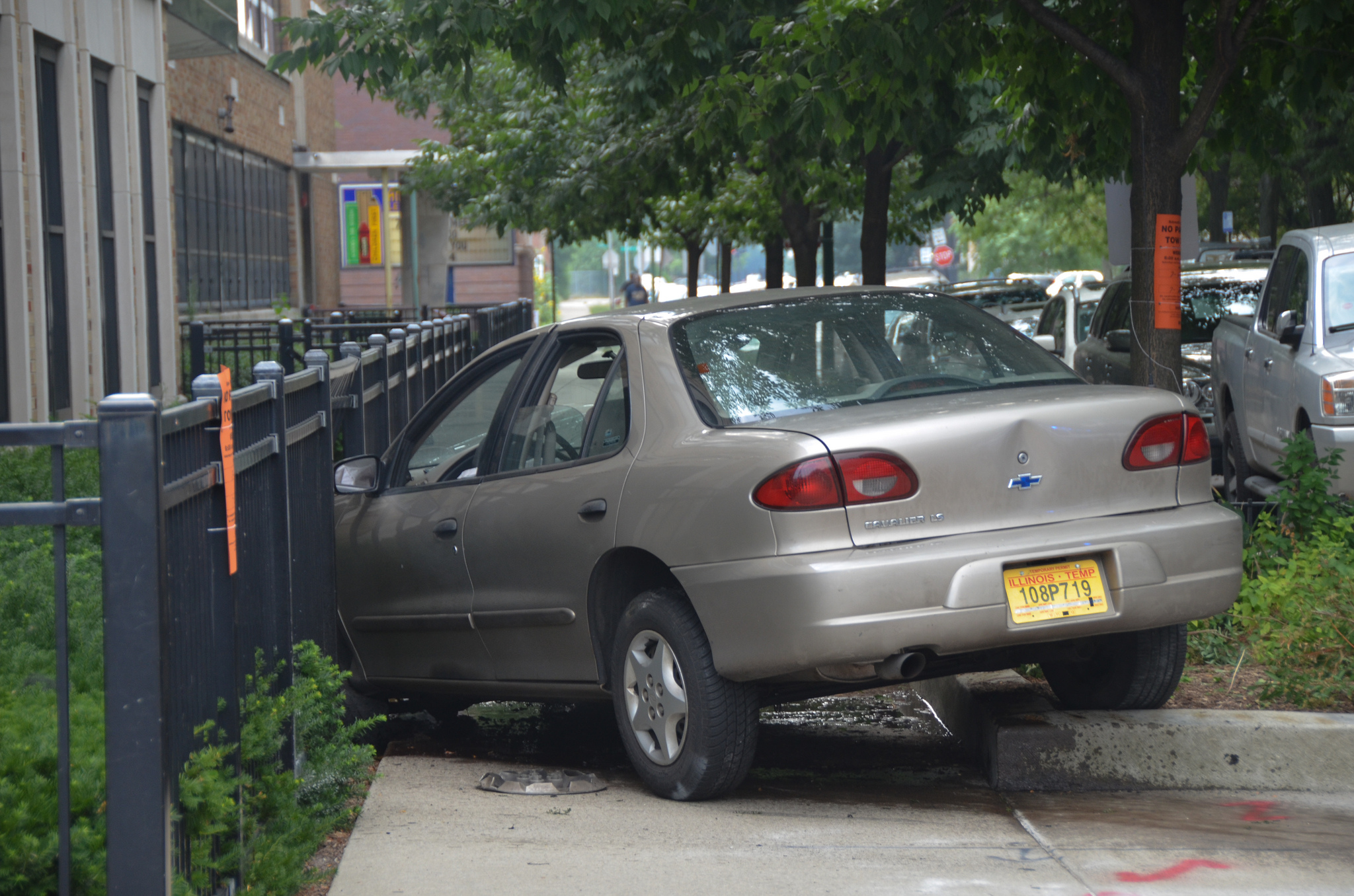
Chicago traffic crash data is now back on the web, thanks to the Chicago Department of Transportation and the Chicago Police Department for collaborating on the matter.
A little background: The Illinois Department of Transportation used to have a publicly-accessible website called "Safety Data Mart" that had a traffic crash map for the whole state (although it was quite difficult to sign up to see it). However, in 2015 IDOT removed that website and created a new one that was only available to municipal workers. That left the Chicago Crash Browser, a website I created previously, as the only website where the public could find out just how many times motorists struck bicyclists during a given period in Chicago, and where the crashes occurred. IDOT reversed their policy in late 2015, and I took down the crash browser in late 2017 because it required too much time and money to maintain it.
Fast forward to yesterday: CDOT announced that the same kind of crash data is now available in its data portal, where a map and a spreadsheet-like tool allow the public to look for crash information by time, type, and location. According to a press release from the department, the database will be updated with info about crashes within days of their occurrence. This quick turnaround is made possible because of new technology that the Chicago Police Department adopted which allows them to skip time-consuming paperwork.
If you want to started looking up information, here's a primer. There are three tables, for crashes, vehicles, and people. A crash represents a collision between a car and one or more other car, pedestrian, bicyclist, or fixed object. There is no data for crashes between bicyclists, or bike-pedestrian collisions. Each crash is linked to one or more vehicles and one or more people through the "RD" number field – this is the same as the police report number written on the report a responding officer fills out on scene or at the station.

In the first half of 2018, there have been 47,719 reported crashes in Chicago, according to the CPD's data on the portal. That number doesn't include crashes where another agency took the report, like Cook County Sheriff's Department or the Illinois State Police. There is no comparison period yet available, since the data starts in September 2017. There are earlier crash reports from select police districts, but there are no plans to backfill the database with pre-September numbers.
Twenty-six percent of the crashes in the first half of 2018 were classified as hit-and-runs. Of the 47,719 crashes, 494 involved a bicyclist, and 82 of those cases were doorings.
There were 1,303 cases of a motorist striking a pedestrian in the first half of 2018. Of those, 402 were classified as hit-and-runs, or 31 percent. That's about 20 percent higher than the hit-and-run rate overall.
The 42nd ward, which includes most of downtown, was the area that saw the most pedestrian crashes in early 2108, which isn't surprising due to its high foot traffic and chaotic motor vehicle traffic. There were 123 reported pedestrian crashes in the ward, about 10 percent of all Chicago pedestrian collisions. Since there are 50 wards, that's roughly five times as many as an average ward, so it's no wonder that the city has identified downtown as a Vision Zero focus area.
The 27th Ward, which covers most of the West Loop and stretches all the way to West Humboldt Park, saw the second-highest number of reported pedestrian crashes during this period, with 71 collisions.
The third most pedestrian crash-prone ward was the 28th Ward, which covers parts of East and West Garfield Park, and an area north and east of Douglas Park, all the way to the Illinois Medical District. This is a somewhat surprising because this large ward has a relatively low population density. There were 52 reported crashes in the ward, concentrated on long stretches of Madison Street and Pulaski Road.
This post is made possible by a grant from Freeman Kevenides, a Chicago, Illinois personal injury law firm representing and advocating for bicyclists, pedestrians and vulnerable road users. The content belongs to Streetsblog Chicago, and Freeman Kevenides Law Firm neither endorses nor exercises editorial control over the content.




